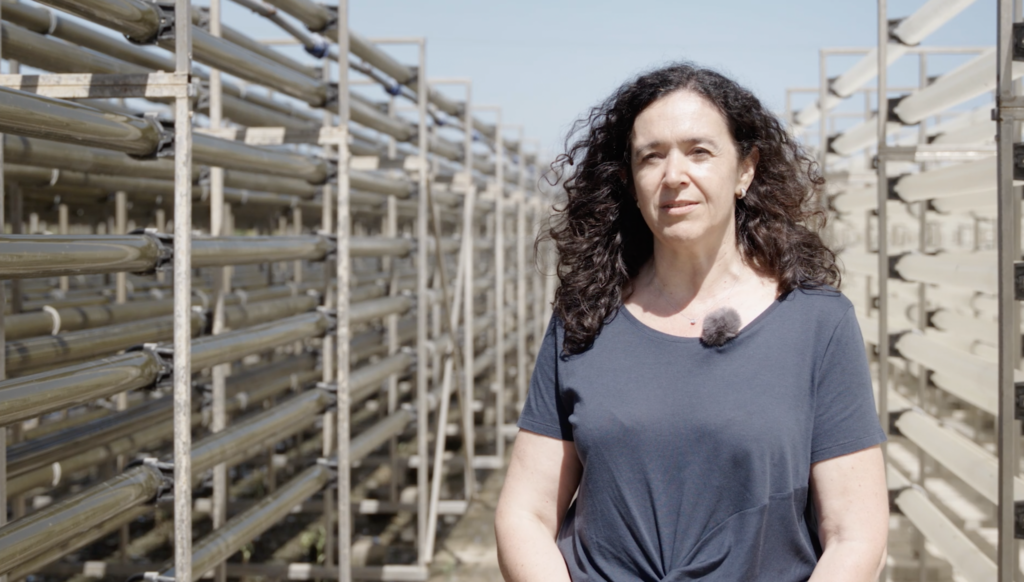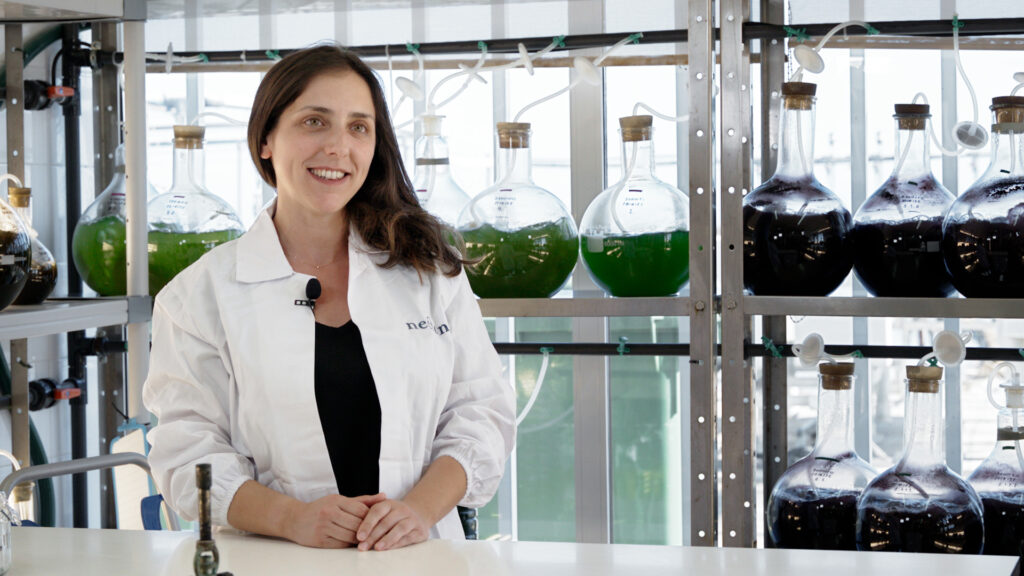Inflammatory bowel disease (IBD) is a chronic inflammation in the digestive tract. Currently no effective treatment exists, something that the researchers of the EU-funded Algae4IBD project want to change with the help of microalgae
Microalgae are a promising resource for new medical agents, and algae cultivation can be optimised to produce the desired compounds in the required quantities. How does it all work? Two scientists involved in the Algae4IBD project give an insight.
Finding new medicinal compounds in algae
Luísa Barreira has been working with microalgae for 14 years – knowledge that the professor at the University Algarve and researcher at the Centre of Marine Sciences is using to find algae that can help treat IBD.

Why are microalgae important for our health?
Microalgae can be a sustainable source of protein. They are also rich in omega-3-fatty acids, which we usually get from fish in our diets. It is however not the fish that produce these fatty acids but the microalgae that the fish feed on. For medicine, the pharmaceutical industry is always looking for novel compounds and microalgae contain unique compounds that we don’t find in terrestrial sources. This is where the Algae4IBD project comes in. We’re looking for new compounds with anti-inflammatory and antioxidant effects in microalgae.
Why can new medicines developed from these algal compounds help fight IBD?
Anti-inflammatory compounds reduce inflammation in our body or specifically in the bowel. Antioxidant compounds can treat oxidative stress, a condition that influences the onset of most diseases in our body. So, compounds with antioxidant and anti-inflammatory activity would be key to treating any inflammation in our body.
Did you find such compounds?
Yes, we have found some algae strains that have anti-inflammatory activity. Now we are trying to identify the compounds that are responsible for this activity, which can take us several months. Then we can devise strategies to improve the algae strains to increase the amount of the anti-inflammatory compounds that the algae produce.
These compounds come from nature. How important is natural diversity for medicine?
It is very important. The algae we have found only exist because there is a great diversity of species in the ocean. If we reduce the diversity of organisms in the marine environment, we also reduce the sources of medicinal compounds. I hope our story helps to raise people’s awareness that efforts to preserve biodiversity are worthwhile.

Improving the production of microalgae
Whether they are brown, red or green, Mariana Carneiro likes all algae. She is the Innovation Manager of the company Necton, Europe’s oldest microalgae producer, and optimises the cultivation of microalgae for the production of animal feed, cosmetics, and more.
Why do you grow different algae species?
They all have their own strengths, just like people. Brown algae produce fucoxanthin. It has anti-inflammatory and antioxidant effects, interesting properties for the pharma and cosmetic industry. Cyanobacteria, previously called blue-green microalgae, on the other hand are rich in phycobiliproteins which give them their bluish tones and are used as natural food colorants.
To commercialise these algal products, you have to produce large quantities of microalgae. How does that work?
To produce microalgae at an industrial scale, we start by growing a few cells in a very small volume. These cells divide and grow, reaching higher concentrations. When this happens, we transfer this small volume into a bigger one. Imagine pouring the content of a 250 mL bottle into a one-litre bottle, then into a five-litre bottle, and then into a twenty-litre bottle. It goes on like this until we reach the industrial tubular reactors, which can have a volume of 19 000 litres and more.
And this works the same way for all microalgae?
No, because two species of algae are never the same. Each species has its own specific needs. For example, some don’t like it when the flow rate of the reactors is very high. Then we lower the speed of the circulation pumps. We adapt to the algae, and we also try to adapt the algae to us, to colder temperatures, for example. It’s like a ‘meet me halfway’ strategy.
It sounds like a lot of work. Are microalgae worth this effort?
I believe that algae are the future. Microalgae cultivation can be quite sustainable with the right approach. At Necton, we have installed photovoltaics to use solar energy, and we use marine algae, taking the pressure off freshwater resources. Microalgae are a natural source of compounds that, for example, can be used to treat diseases like IBD. Every day we find a new algae strain with interesting possibilities. They have a lot of potential and I don’t see no other way than to move forward.
This article was originally published on Open Access Government on 28th March 2023.

